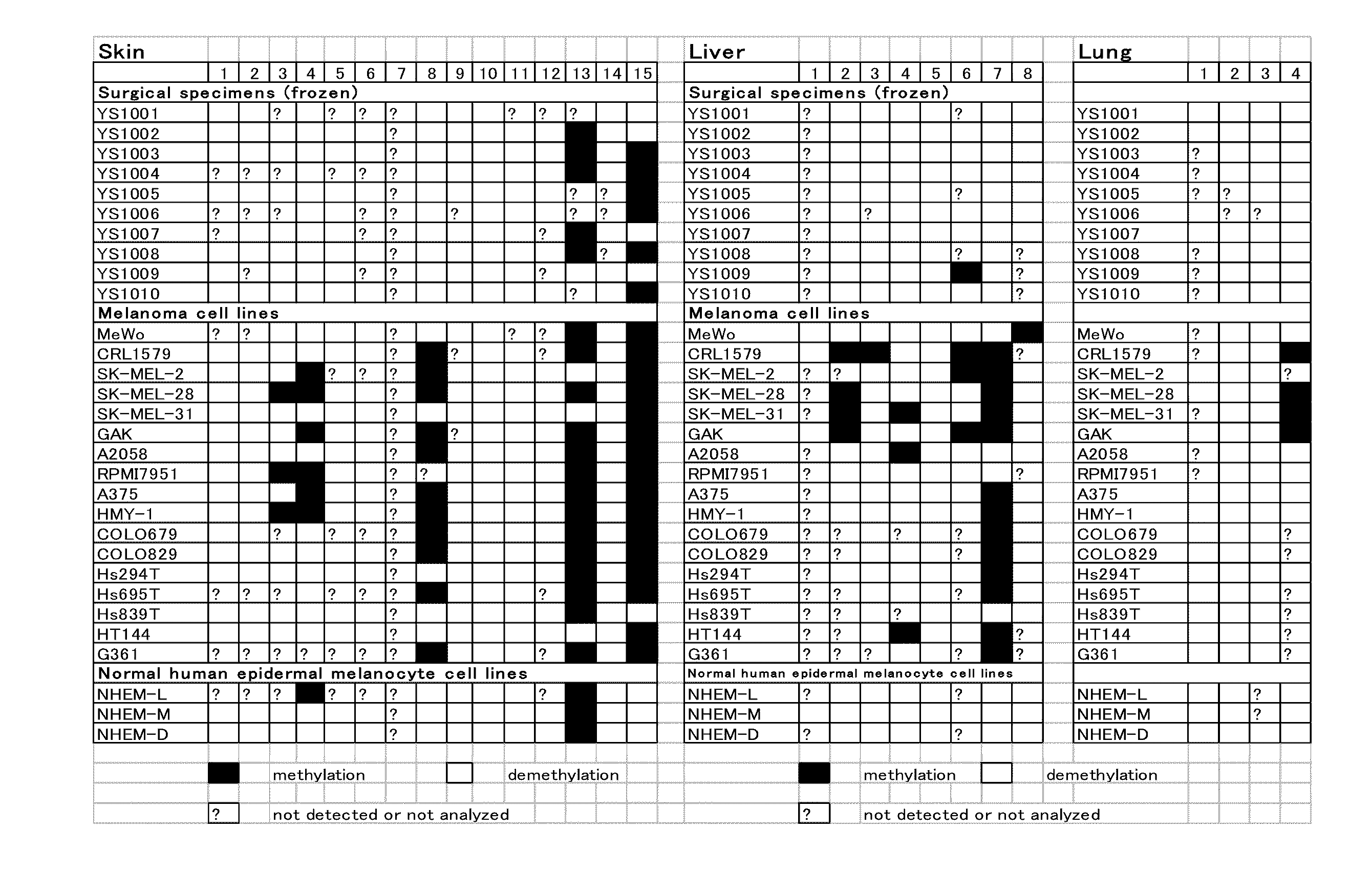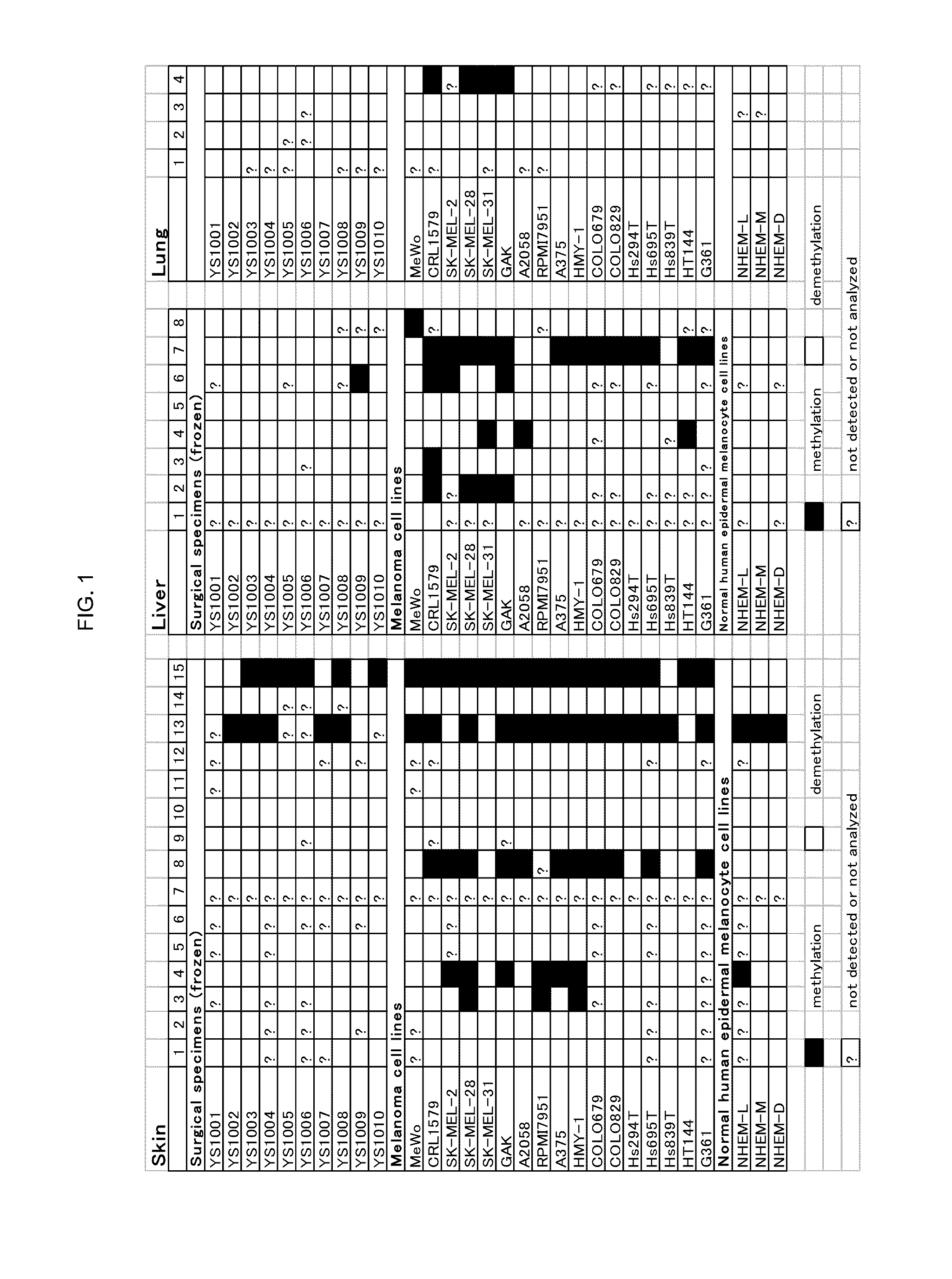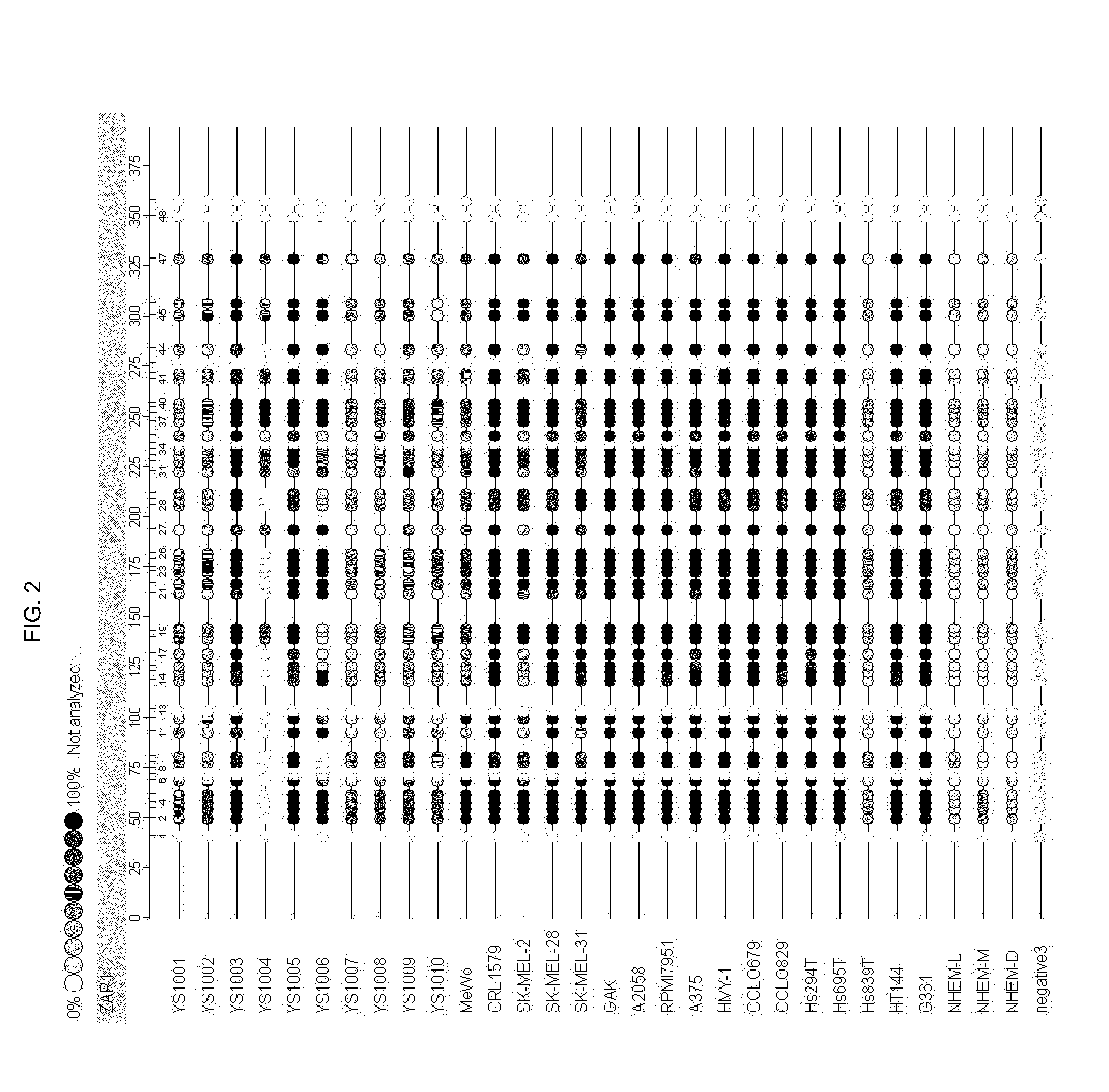Proliferative disease detection method
- Summary
- Abstract
- Description
- Claims
- Application Information
AI Technical Summary
Benefits of technology
Problems solved by technology
Method used
Image
Examples
example 1
1. Biological Sample
[0080]The following biological samples were used: 30 cases of malignant melanoma patient specimens, which were examined and were subjected to surgery at Dermatological Section, Itabashi Hospital, Nihon University School of Medicine and which were histopathologically diagnosed as malignant melanoma (10 cases of cryopreserved specimens and 20 cases of paraffin-embedded specimens); 17 types of malignant melanoma cell lines; 4 types of normal human skin melanocyte cell lines; 3 cases of normal human ovary excised at Gynecological Section, Itabashi Hospital, Nihon University School of Medicine (paraffin-embedded specimens); 1 type of normal human umbilical vein vascular endothelial cell line; 63 types of other malignant tumor cell lines; and 3 types of normal human fibroblast cell lines.
[0081]Specimens were collected from patients, after the patients had been explained about specimen collection and written informed consent had been then obtained from all the patients....
example 2
[0140]Based on the above-described finding that the methylation of the genomic DNA of the Zar1 gene can be used as a cancer marker, it was confirmed in the present example that various types of cancers such as neuroblastoma, pulmonary blastoma and bladder cancer can be detected using the marker.
1. Biological Sample
[0141]The following biological samples were used: 22 cases of cryopreserved neuroblastoma patient specimens, which were examined and were subjected to surgery at Pediatric Surgery Section, Itabashi Hospital, Nihon University School of Medicine and which were histopathologically diagnosed as neuroblastoma; 2 cases of cryopreserved patient normal adrenal tissue specimens; 2 cases of cryopreserved patient normal adrenal tissue specimens; 2 neuroblastoma cell lines; 11 cases of cryopreserved patient specimens which were diagnosed as hepatoblastoma; 7 cases of non-tumor portions of hepatoblastoma patient specimens; 2 hepatoblastoma cell lines; the cryopreserved patient specimen...
PUM
| Property | Measurement | Unit |
|---|---|---|
| Length | aaaaa | aaaaa |
| Length | aaaaa | aaaaa |
| Length | aaaaa | aaaaa |
Abstract
Description
Claims
Application Information
 Login to View More
Login to View More - R&D
- Intellectual Property
- Life Sciences
- Materials
- Tech Scout
- Unparalleled Data Quality
- Higher Quality Content
- 60% Fewer Hallucinations
Browse by: Latest US Patents, China's latest patents, Technical Efficacy Thesaurus, Application Domain, Technology Topic, Popular Technical Reports.
© 2025 PatSnap. All rights reserved.Legal|Privacy policy|Modern Slavery Act Transparency Statement|Sitemap|About US| Contact US: help@patsnap.com



